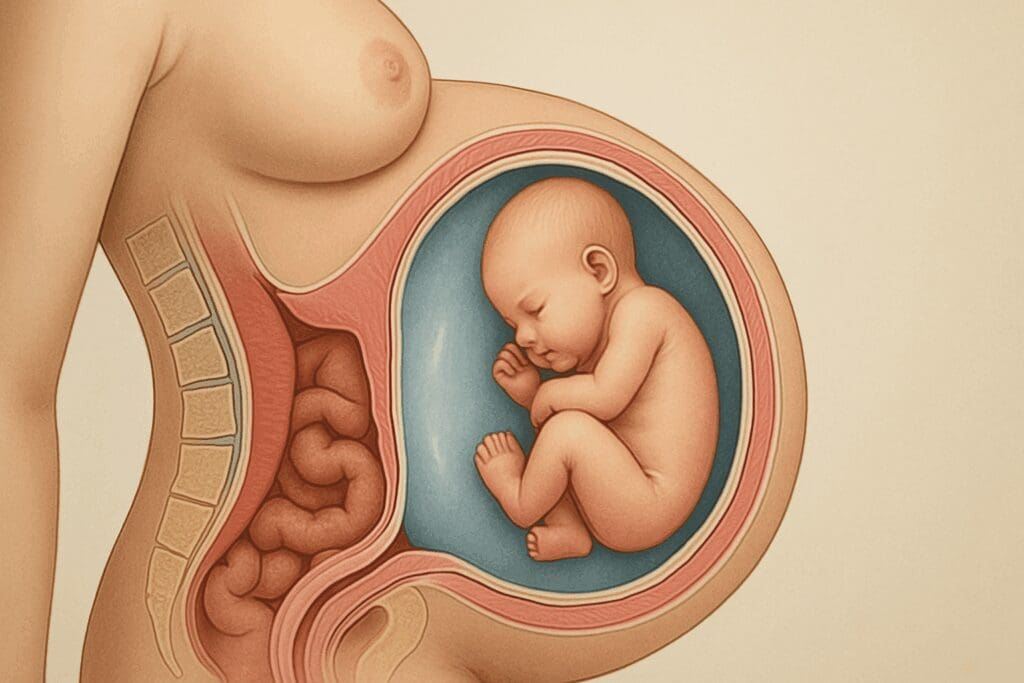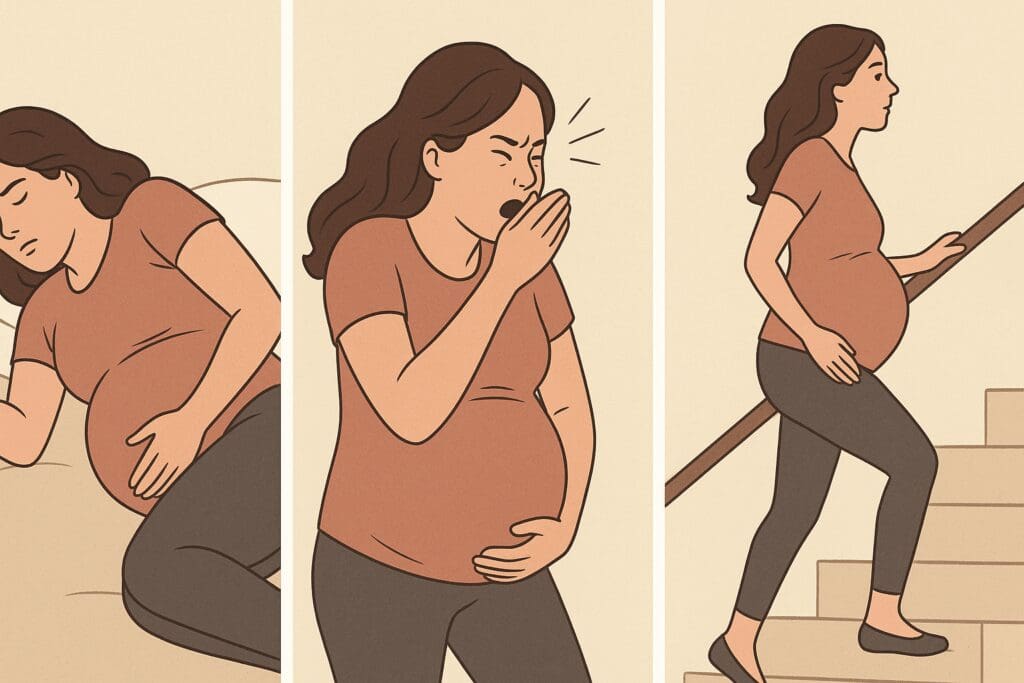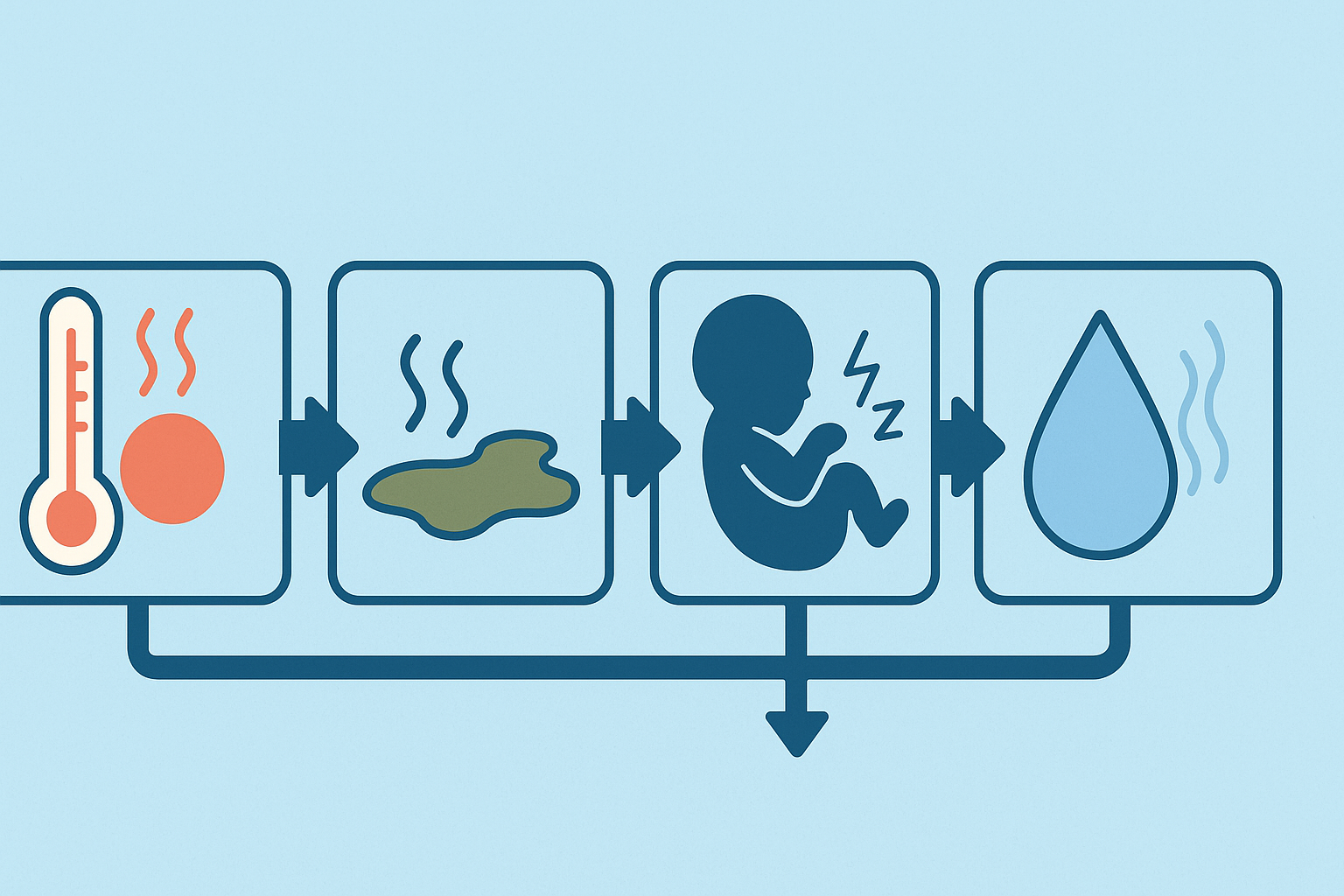Pregnancy is a time filled with anticipation, careful observation, and a fair amount of uncertainty, especially as the due date draws near. For many expectant parents, the onset of labor marks the dramatic beginning of childbirth, and it’s often imagined as a sudden, unmistakable event. However, the reality can be far more nuanced. One of the most perplexing scenarios arises when your water broke but no contractions start: vital signs you should go to the hospital are often subtle and easily overlooked, yet they are essential for ensuring the safety of both the mother and the baby.
You may also like: Essential Techniques for Pregnant Pushing: A Powerful Guide to Labor Preparation

Understanding the Physiology of Water Breaking
The phrase “your water broke” refers to the rupture of the amniotic sac, the protective membrane that encases the baby and the amniotic fluid. This rupture is medically termed as spontaneous rupture of membranes (SROM), and it’s one of the classic signs that labor is near. When this event occurs, it usually signals that delivery is imminent, but it doesn’t always mean contractions will begin immediately. In fact, it’s common for there to be a gap—sometimes several hours—between the rupture of membranes and the onset of regular contractions.
Amniotic fluid serves many vital purposes during pregnancy. It cushions the baby, allows for fetal movement, helps regulate temperature, and plays a key role in the development of organs. Once the amniotic sac ruptures, the protective barrier is compromised, increasing the risk of infection. This is one of the primary reasons why knowing when to go to the hospital for labor is crucial, particularly if there are no accompanying contractions. Healthcare providers often advise monitoring the time between water breaking and the beginning of labor to determine whether medical intervention is necessary.

Recognizing What It Feels Like When Your Water Breaks
Every woman’s experience with water breaking is unique. For some, it’s a sudden gush of fluid, unmistakably signaling the start of labor. For others, it may be a slow trickle that can easily be mistaken for urinary incontinence or vaginal discharge. Understanding how does it feel when your water breaks can help differentiate this experience from other bodily sensations common during late pregnancy. Generally, amniotic fluid is clear or pale yellow and odorless or slightly sweet-smelling.
Knowing how to tell if your water broke involves both sensation and observation. If you suspect that your water has broken, consider the volume, color, and odor of the fluid. You can place a sanitary pad or towel in your underwear and monitor it over time. If the pad becomes consistently wet with clear fluid, it’s a likely sign that your water has broken. Consulting a healthcare provider is essential, especially if you notice a green or brown tint to the fluid, which could indicate the presence of meconium—a sign that the baby may be in distress.
How to Tell When Your Water Breaks Without Contractions
When contractions do not follow the rupture of membranes, it raises questions about how long after water breaks do contractions start and what to do in the interim. Typically, contractions begin within 12 to 24 hours after the water breaks. However, every labor is different, and the timing can vary significantly from one person to another. The longer the gap between membrane rupture and labor onset, the higher the risk for infection and other complications.
Understanding broken waters no contractions scenarios is essential because it influences the clinical decisions that follow. Some healthcare providers may adopt a watch-and-wait approach for up to 24 hours if there are no signs of infection and the pregnancy is full-term. Others may recommend induction of labor to minimize the risks. In either case, staying in close contact with your provider and being attentive to signs of infection—such as fever, chills, or foul-smelling discharge—is critical.

What Does It Mean When Your Water Breaks but You Don’t Feel Labor?
Experiencing the water breaking without subsequent contractions can feel anticlimactic and even confusing. It defies the conventional narrative of immediate labor onset. So, how long after water breaks will contractions start? While it might be anywhere from minutes to a day, if labor doesn’t commence naturally, medical induction may become necessary. This is particularly important in cases where the pregnancy is past the 37-week mark and there are no complications that would contraindicate a vaginal delivery.
If you’re unsure about whether you’ve experienced a true rupture of membranes, diagnostic tests in the hospital, such as a nitrazine test or amniotic fluid fern test, can confirm the presence of amniotic fluid. These tests are straightforward, non-invasive, and can quickly resolve any uncertainty. Clarity in this matter is crucial, especially if you’re trying to determine when to go to the hospital for labor.

How Does Your Water Break and What Triggers It?
The rupture of membranes can occur spontaneously or be induced medically. Most commonly, it happens due to the natural softening and thinning of the cervix combined with uterine contractions. However, it can also result from a sudden movement, a change in position, or simply reaching full term. While it’s possible to go into labor without your water breaking, the majority of labors are preceded or accompanied by membrane rupture.
Learning how does your water break and what does it mean when it does gives you a clearer sense of labor progression. It’s also essential to differentiate between true rupture and other causes of fluid leakage. Misinterpreting urinary leakage or increased vaginal discharge as amniotic fluid could result in unnecessary trips to the hospital or delays in getting the care you need.

Vital Signs That You Should Go to the Hospital When Your Water Breaks Without Contractions
When your water broke but no contractions start: vital signs you should go to the hospital include a range of clinical and experiential markers. If the fluid is green, brown, or foul-smelling, it suggests the baby may have passed meconium and could be under stress. This situation often warrants immediate medical attention. A persistent leak that soaks through sanitary pads, coupled with the absence of contractions, also suggests that you need to be evaluated promptly.
Another critical sign is the onset of fever or chills, which could indicate infection. Reductions in fetal movement, maternal discomfort, or a known diagnosis of Group B Strep during pregnancy further necessitate urgent medical evaluation. Understanding labor pains symptoms when to go to hospital is not limited to contractions alone but also includes these vital signs that could signal underlying complications.
After Your Water Breaks: How Long Until Delivery?
One of the most frequently asked questions is after your water breaks how long until delivery. The answer is, it depends. In some cases, labor begins within a few hours and proceeds rapidly. In others, it may take longer, especially if the cervix is not yet dilated or effaced. First-time mothers may experience a longer latent phase, while subsequent pregnancies often progress more quickly. Regardless of the timeline, what matters most is careful monitoring and timely intervention if necessary.
Many hospitals adopt a protocol of initiating labor within 24 hours of membrane rupture to reduce infection risk. Some studies suggest that waiting up to 48 hours may be safe under close supervision, but the standard of care generally errs on the side of caution. Understanding the timeline helps you make informed decisions about your care and prepares you for what lies ahead.

Can You Go Into Labor Without Your Water Breaking?
Yes, you absolutely can go into labor without your water breaking. In fact, for many women, contractions begin first and the water breaks later in the process. This occurrence is more typical than one might assume and is referred to as “intact membranes.” Healthcare providers sometimes rupture the amniotic sac artificially during active labor to accelerate progress, a procedure known as amniotomy.
The question of can you go into labor without your water breaking is crucial because it underscores the variability of labor presentations. Just as labor can begin with contractions, it can also begin with subtle signs such as lower back pain, pelvic pressure, or the so-called “bloody show.” Paying attention to these early labor indicators helps in determining when to go to the hospital for labor.
What Happens When Your Water Breaks: Immediate Steps to Take
Once your water breaks, the first step is to remain calm and assess the situation. Note the color, odor, and amount of fluid. Try to determine the time of rupture and whether contractions have begun. Avoid inserting anything into the vagina, including tampons or engaging in intercourse, as this can introduce bacteria and increase the risk of infection.
Call your healthcare provider to report the event and follow their guidance. They may ask you to come to the hospital immediately or suggest waiting at home for a few hours if everything appears normal. Understanding what happens when your water breaks prepares you for these decisions and alleviates anxiety during a time of heightened emotions.
Signs Your Water Is About to Break: What to Watch For
While predicting the exact moment of water breaking is not possible, there are signs your water is about to break that can offer clues. These include an increase in vaginal discharge, the sensation of pelvic pressure, or subtle cramps. Sometimes, a slow leak precedes a full rupture, giving a preview of what’s to come.
Recognizing signs your water going break can prompt you to prepare mentally and logistically. Having your hospital bag packed, childcare arranged if needed, and transportation ready can make a significant difference when the moment arrives. Being attuned to your body’s signals helps in navigating the uncertainties of labor and delivery.
How Do You Know When Your Water Breaks? Understanding Diagnostic Clarity
It’s not always obvious how do you know when your water breaks, especially when the symptoms are subtle. Diagnostic tools used in hospitals, such as litmus tests or ultrasound, provide clarity. However, you can also observe changes in fluid consistency and quantity at home.
Knowing how to tell if your water broke versus other types of discharge is critical for determining the appropriate response. Amniotic fluid is typically continuous and increases with movement, unlike urine, which can be controlled. Understanding these nuances equips you with the knowledge to make informed decisions.
What Does It Look Like When Your Water Breaks?
Amniotic fluid is usually clear or slightly yellow and free of a strong odor. However, the appearance can vary depending on gestational age and the baby’s health. Understanding what does it look like when your water breaks helps distinguish it from other bodily fluids and identifies potential issues such as meconium staining.
If you notice cloudy, green, or brown fluid, or if the fluid contains flecks of blood, it’s essential to seek medical attention promptly. These variations can indicate fetal distress or infection, both of which require intervention. Keeping track of what you see and sharing this with your provider can aid in timely diagnosis and care.
Giving Birth: When to Go to the Hospital After Water Breaking
Giving birth when to go to hospital depends on a constellation of factors, including the stage of labor, the presence or absence of contractions, and the color and smell of the amniotic fluid. If your water has broken and you are not experiencing contractions, the timing becomes even more critical.
Most healthcare providers recommend going to the hospital within a few hours of membrane rupture, especially if you are GBS-positive or past your due date. If you notice a reduction in fetal movement or signs of infection, do not wait. Prompt evaluation ensures that both mother and baby receive the care they need.
Frequently Asked Questions About Water Breaking, Labor Timing, and Hospital Decisions
When Your Water Broke but No Contractions Start: Should You Always Go to the Hospital Immediately?
Not necessarily—but close monitoring is essential. If you experience a clear gush or a consistent trickle of fluid and suspect your water broke, the absence of contractions doesn’t mean you’re not at risk. Medical professionals often recommend heading to the hospital within 6 to 12 hours to check for signs of infection or fetal distress. The risk of chorioamnionitis, a serious infection, increases the longer you wait, especially without contractions starting. Ultimately, when your water broke but no contractions start: vital signs you should go to the hospital include fever, foul-smelling discharge, or decreased fetal movement—even in the absence of pain.
How Can I Tell If My Water Broke or If It’s Something Else?
Distinguishing between amniotic fluid and other types of discharge can be surprisingly tricky. Urine typically has a stronger odor and can be controlled voluntarily, whereas amniotic fluid is odorless or slightly sweet and leaks continuously. One practical method is to wear a pad and observe the wetness over time—if it consistently saturates the pad without effort, it could be your water. In some cases, providers perform a nitrazine pH test or a fern test to confirm. If you’re uncertain how to tell if your water broke, it’s best to call your healthcare provider to rule out a false alarm and ensure a safe plan of action.
What Happens When Your Water Breaks but There Are No Labor Pains?
The experience of broken waters no contractions can be unexpectedly calm, but this silence doesn’t imply safety. Without the uterine contractions that help push the baby downward, the open amniotic sac presents a higher risk of infection. Many hospitals allow up to 24 hours for labor to begin naturally if there are no complicating factors, while some may suggest induction sooner. In such cases, providers typically monitor for signs of infection and check fetal heart rates frequently. This is why understanding what happens when your water breaks and you don’t feel contractions is vital to making informed choices.
How Does Your Water Break, and Can It Be Prevented or Predicted?
Water breaking is often spontaneous and cannot be precisely predicted or prevented. It occurs when pressure within the uterus exceeds the strength of the amniotic sac, commonly during late pregnancy. Occasionally, healthcare providers may manually break your water to induce or accelerate labor. Activities such as sexual intercourse or changes in position may correlate with membrane rupture in some individuals, but there’s no guaranteed trigger. Understanding how does your water break gives you a broader perspective on labor’s unpredictable nature and can help set realistic expectations.
Do You Always Get Contractions Before Your Water Breaks?
No—contractions and water breaking don’t always follow the same timeline. Many women experience strong contractions before their water breaks, while others may find the reverse is true. In fact, a significant percentage of labors begin with contractions, while the amniotic sac remains intact until later in the birthing process. This leads to the clinical option of artificially rupturing membranes to progress labor. If you’re wondering do you have contractions before your water breaks, the answer is often “yes,” but not universally—and it’s completely normal either way.
How Long After Water Breaks Do Contractions Typically Start?
For most women, contractions begin within 12 to 24 hours after the amniotic sac ruptures. However, some may go longer without labor starting naturally. If labor doesn’t begin within this window, many hospitals initiate induction to minimize the risk of complications. The question of how long after water breaks will contractions start doesn’t have a one-size-fits-all answer, as it depends on factors like gestational age, parity, and maternal health. This uncertainty emphasizes the importance of maintaining open communication with your care team during early labor.
Can You Go Into Labor Without Your Water Breaking?
Yes—and it’s more common than people think. Labor often starts with contractions while the amniotic sac remains intact. In these cases, the water may not break until the later stages of dilation or even during delivery. Some women never experience a spontaneous rupture at all, and their provider may perform an amniotomy if needed. So if you’re asking can you go into labor without your water breaking, the answer is a definitive yes—and it doesn’t necessarily mean your labor is progressing incorrectly.
What Should I Watch for in Late Pregnancy to Know If My Water Is About to Break?
There are subtle signs your water is about to break, though none are definitive. These include increased pelvic pressure, a change in the texture or quantity of vaginal discharge, or a general feeling of restlessness. Sometimes, women describe a “popping” sensation or notice a slow leak before a full rupture occurs. It’s also not uncommon to experience cramping or irregular contractions in the hours preceding a rupture. If you’re in the final weeks of pregnancy and sense signs your water going break, staying alert and having your hospital bag packed can ease anxiety and support a smooth transition into labor.
When Your Water Broke but No Contractions Start: Hospital Induction Decisions
When your water broke but no contractions start: vital signs you should go to the hospital include subtle yet medically significant cues. One of the main decisions providers face in this situation is when to induce labor. The choice often depends on how long it has been since the rupture, whether the pregnancy is full-term, and if the mother carries any known infections like GBS. Induction may involve medications like Pitocin or mechanical methods such as a Foley bulb. Knowing when to go to the hospital for labor in such scenarios can make all the difference in ensuring both safety and peace of mind.
After Your Water Breaks, How Long Until Delivery Happens in Real-World Scenarios?
In practice, after your water breaks how long until delivery varies widely among individuals. Some first-time mothers may take 18 to 24 hours or more to deliver, while multiparous women may give birth within 6 to 12 hours. Variables such as cervical dilation, baby’s position, and maternal health all influence timing. Additionally, cultural practices and hospital policies vary globally—some facilities push for quick induction, while others take a more patient-centered approach. Understanding the range of outcomes after your water breaks helps you prepare mentally and emotionally for a labor process that might not follow a standard script.
Conclusion: Responding Wisely When Your Water Breaks Without Contractions
Navigating the final stretch of pregnancy requires attentiveness, knowledge, and a proactive mindset. When your water broke but no contractions start: vital signs you should go to the hospital become your compass in uncertain territory. Recognizing the appearance and timing of amniotic fluid, monitoring for signs of infection or fetal distress, and maintaining open communication with your healthcare provider all contribute to a safe and healthy delivery experience.
The complex reality of childbirth often defies expectations and challenges preconceived notions. Yet, through understanding the physiology of water breaking, recognizing what does it feel like when your water breaks, and discerning how to tell when your water breaks, you become an empowered participant in your birth journey. Whether labor begins moments after your water breaks or requires a gentle medical nudge, being prepared and informed ensures that you and your baby are in the best possible hands.
Ultimately, the question of birth when to go to hospital isn’t just about contractions. It’s about understanding your body, recognizing crucial signals, and making timely, informed choices. With expert guidance and awareness of how long after water breaks do contractions start or what does it mean when your water breaks, you lay the foundation for a safe, supported, and confident transition into parenthood.



